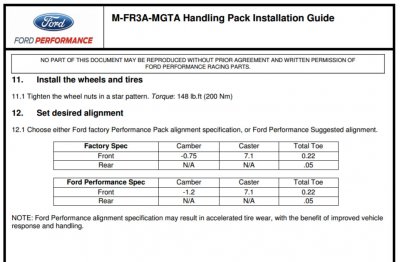Okay, thanks. So, I'm reading you say: With a stock 05-09 Mustang, toe is routinely adjusted during alignment, camber could be adjusted but is not routinely, and caster is set/unadjustable?
Correct, you need cc plates that allow caster adjustment. Some only allow camber, like the steeda ones. 1* of additional camber is advertised with those, and that is exactly what I got after install and maxxing out adjustment.



